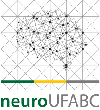Banca de DEFESA: MARILIA INES MOVIO
Uma banca de DEFESA de MESTRADO foi cadastrada pelo programa.DISCENTE : MARILIA INES MOVIO
DATA : 07/04/2020
HORA: 14:00
LOCAL: sala S17, Térreo, Bloco Delta, Campus SBC da Fundação Universidade Federal do ABC, localizada na Alameda da Universidade, s/n, Bairro Anchieta - São Bernardo do Campo, SP.
TÍTULO:
Functional expression of AGO2 role in retinal development
PÁGINAS: 88
GRANDE ÁREA: Ciências Biológicas
ÁREA: Fisiologia
SUBÁREA: Fisiologia de Órgãos e Sistemas
ESPECIALIDADE: Neurofisiologia
RESUMO:
The retina is a neural tissue that has specialized cells in light processing and transmission. During its development, the retinal progenitor cells (RPCs) are guided to become specific cell types that are originated in a specific order, which is phylogenetically conserved. This cell fate is determined by several intrinsic and extrinsic factors, as the microRNAs (miRNAs). The miRNAs are small non-coding RNAs that control protein levels in a posttranscriptional manner. The action of miRNAs depends on a well-orchestrated machinery, which is particularly interesting the role of Argonaute-2 (AGO2) protein. Besides related to biogenesis of miRNAs, AGO2 was also described performing non-canonical roles in nucleus, more related to epigenetic processes. However, the knowledge about the role of AGO2 during development is limited. Thus, the main aim of this work was to characterize the functional role of AGO2 in retinal development. Long Evans rats in early post-natal (P0) and adult (P60) ages was provided by UFABC vivarium, kept in 12:12h dark-light cycle. Animals were euthanized using intraperitoneal urethane (25%) and decapitation. Retinas were harvested to describe AGO2 in the developing and adult retina using real-time PCR (n=6), ii) western blotting (WB, n=5) and immunofluorescence (IF, n=6). We also employed Manders’ and Spearman coefficient analyses (n=6) for AGO2-nucleus colocalization. To induce AGO2 knockdown, morpholino oligo (MO) or scramble control oligo (Ctl) were injected in P0 subretinal space, and retinas were harvested after 2, 5 and 7 days for WB (n=8), IF (n=6), hematoxylin-eosin staining (HE, n=6), TUNEL assay (n=5) in order to evaluate the consequences of AGO2 knockdown in: i) Retina proliferation and apoptosis, ii) Retinal maturation, and iii) Post-born retinal cytogenesis. For AGO2 knockout, we designed a dual plasmid CRISPR/Cas9 system of co-transfection which consists in the exchange of AGO2 sequence for a blue fluorescence protein (eBFP). All procedures were approved by UFABC Animal Care Ethics Committee (16/2014 e 1102011018) and results were measured using descriptive statistics and compared by paired t-test. PCR and WB revealed that both gene expression and protein levels of AGO2 are lower at P0 (PCR: 2^-1=0.5-fold expression; P<0.05; WB: P0: 0.57±0.07 vs P60: 1.18±0.09 normalized optical density, P<0.01). IF and fractionated protein quantification showed no changes of AGO2 in cytosol, while in P60 AGO2 cumulates in nucleus (P0: 15.63±1.77 vs P60: 23.95±2.32, P<0.05). When AGO2+ cells were analyzed, results showed that AGO2 localization depends on cell differentiation state. In P0, Spearman analysis showed lower nuclear AGO2 in immature cells than in mature (-0.04±0.22 vs 0.25±0.18, P<0.05), while Manders’ revealed no changes in nuclear AGO2 in differentiated ganglion cells. In immature cells, AGO2 have demonstrated to be more related to mitosis-phase than synthesis. The MO oligomer treatment caused reduction of 52% in AGO2 protein levels 7 days after treatment, and the knockdown seems to affect more the nuclear portion than the cytoplasm (Ctl: 0.45±0.08 vs. MO: 0.35±0.0324, P<0.05). The lack of AGO2 seems to induce several changes in the retina, as the reduction in the thickness of the inner nuclear layer (Ctl:17.37±1.25 vs MO:13.69±1.38, P<0.05), decrease in DCX filaments’ (Ctl: 0.29±0.04 vs. MO: 0.19±0.01, P=0.0342, paired t-test, n=6), and it seems to impact differently the specific subtypes: PKCα+ bipolar cells and GFAP+ glial cells demonstrated a reversible alteration, while the CR+ amacrine cells and ChAT+ amacrine cells shows an irreversible alteration (CR+: Ctl: 4.58 ± 1.56 vs MO: 11.17 ± 2.19, P<0.05 in P7 sections, Ctl: 32.43±4.14 vs. MO: 47.25±5.73, P<0.05, paired t-test, n=6 in P18; ChAT+: Ctl: 5.50 ± 0.58 vs MO: 6.00 ± 0.71, P<0.05 in P7, Ctl: 59.00±3.79 vs. MO: 48.33±3.66, P<0.05, paired t-test, n=6 in P18). The other analyzed subtypes did not present alterations due to AGO2 knockdown. The AGO2 knockout using CRISPR/Cas9 eBFP showed a positive in vivo transfection, and the cells seemed to be preferentially located in ONL layer. Taking together, our results revealed that AGO2 translocate to nucleus during retinal development, and its presence is essential for coordinated formation of retinal cell layers and differentiation of retinal subtypes.
MEMBROS DA BANCA:
Presidente - Interno ao Programa - 1676367 - ALEXANDRE HIROAKI KIHARA
Membro Titular - Examinador(a) Interno ao Programa - 1872537 - MARCELA BERMUDEZ ECHEVERRY
Membro Titular - Examinador(a) Externo à Instituição - ANDRÉ MAURICIO PASSOS LIBER - USP
Membro Suplente - Examinador(a) Interno ao Programa - 1674604 - YOSSI ZANA
Membro Suplente - Examinador(a) Interno ao Programa - 1887027 - FERNANDO AUGUSTO DE OLIVEIRA RIBEIRO
Membro Suplente - Examinador(a) Externo à Instituição - GUILHERME SHIGUETO VILAR HIGA - UFABC




